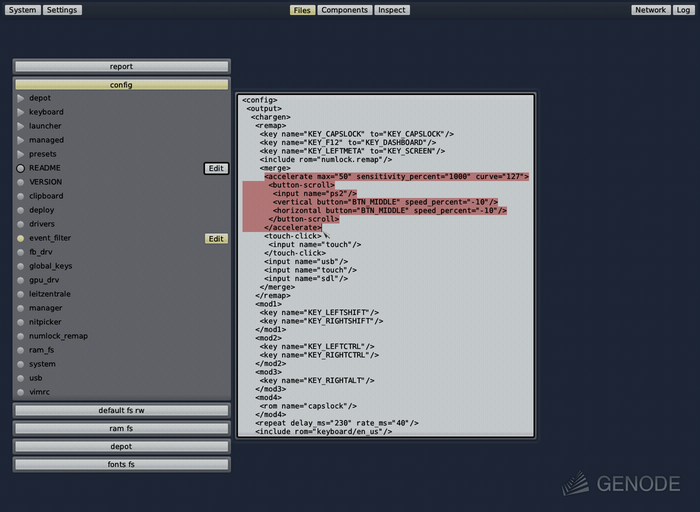Presented project release Sculpt 24.04developing an operating system based on technologies Genode OS Framework, which can be used by ordinary users to perform everyday tasks. Project sources spread licensed under AGPLv3. Available for download LiveUSB image, 30 MB in size. Supports operation on systems with Intel processors and graphics with VT-d and VT-x extensions enabled, as well as on ARM systems with VMM extensions.
Basic innovations:
Advertisement
- The sound stack has been completely redesigned. The new audio stack includes the ability to use plug-in drivers, set arbitrary sampling rates, flexible routing of audio streams, and audio mixing. Added optimizations to reduce delays in audio processing.
- An experimental option to enter sleep mode has been implemented.
- Added support for 4K resolution screens (3840 x 2160)
- Added support for touchpads using the I2C protocol.
- Added support for binding USB devices to virtual machines and applications.
- Tools have been added to the configuration interface to manage the inclusion of additional features, configure application sources, and install applications. Scrolling support has been added to the window with visualization of the component graph and the configurator.
- Improved processing of events from HID devices (Human interface device).
- The interface for managing device drivers has been changed.
- A new TCP/IP stack has been proposed, using a DDE (device-driver environment) layer based on the Linux kernel 6.1.20.
- Added the ability to use Sculpt OS in the Goa SDK as an external target for testing applications.
The system comes with a Leitzentrale graphical interface that allows you to perform typical system administration tasks. The upper left corner of the GUI displays a menu with tools for managing users, connecting storage devices, and setting up a network connection. In the center there is a configurator for configuring the filling of the system, which provides interface in the form of a graph that defines the relationship between system components. The user can interactively arbitrarily remove or add components, defining the composition of the system environment or virtual machines.
At any time, the user can switch to console control mode, which provides greater flexibility in management. A traditional desktop experience can be achieved by running the TinyCore Linux distribution in a Linux virtual machine. In this environment, Firefox and Aurora browsers, a Qt-based text editor and various applications are available. The noux environment is offered for running command line utilities.
Genode provides a unified infrastructure for creating custom applications running on top of the Linux kernel (32 and 64 bit) or microkernels NOVA (x86 with virtualization), seL4 (x86_32, x86_64, ARM), Muen (x86_64), Fiasco.OC (x86_32, x86_64, ARM), L4ka::Pistachio (IA32, PowerPC), OKL4, L4/Fiasco (IA32, AMD64, ARM) and directly executed kernel for ARM and RISC-V platforms. The included paravirtualized Linux kernel L4Linux, running on top of the Fiasco.OC microkernel, allows you to run regular Linux programs in Genode. The L4Linux kernel does not work with hardware directly, but uses Genode services through a set of virtual drivers.
For Genode, various Linux and BSD components have been ported, Gallium3D support has been provided, Qt, GCC and WebKit have been integrated, and the ability to organize hybrid Linux/Genode software environments has been implemented. A VirtualBox port has been prepared that runs on top of the NOVA microkernel. A large number of applications are adapted to run directly on top of the microkernel and the Noux environment, which provides virtualization at the OS level. To run non-ported programs, it is possible to use the mechanism for creating virtual environments at the level of individual applications, allowing you to run programs in a virtual Linux environment using paravirtualization.
Advertisement
Thanks for reading:
